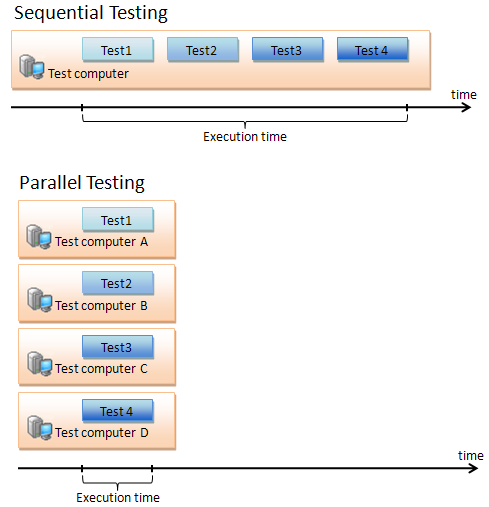Parallel testing is testing multiple applications or components of the application concurrently, to reduce the test time. Parallel tests consist of two or more parts that check separate parts or features of an application. These parts are executed on individual computers simultaneously. Parallel testing allows reducing the test time significantly and increase the testing efficiency.

Do not confuse parallel tests with distributed tests. Both of these kinds of tests consist of several parts that are performed on separate computers. However, distributed testing implies that test parts interact with each other during the test run, while the parallel testing approach is free from any interaction between test parts.
You can easily perform parallel testing with TestComplete. The general procedure of parallel testing includes the following steps:
-
In TestComplete, create tests that will validate various parts or features of your tested application.
-
Orchestrate the parallel test runs. Depending on the test types, you can do it either directly from TestComplete or from an external CI/CD tool.
To learn how to orchestrate parallel test runs for web and mobile tests, see the appropriate topics:
To learn how to orchestrate test runs from an external tool, please see the appropriate topic in the following section:
 Integration With Continuous Integration (CI) Systems
Integration With Continuous Integration (CI) Systems If you use the CI/CD tool to control test runs, each computer participating in the test run must have TestComplete or TestExecute installed.
If you use the CI/CD tool to control test runs, each computer participating in the test run must have TestComplete or TestExecute installed.
